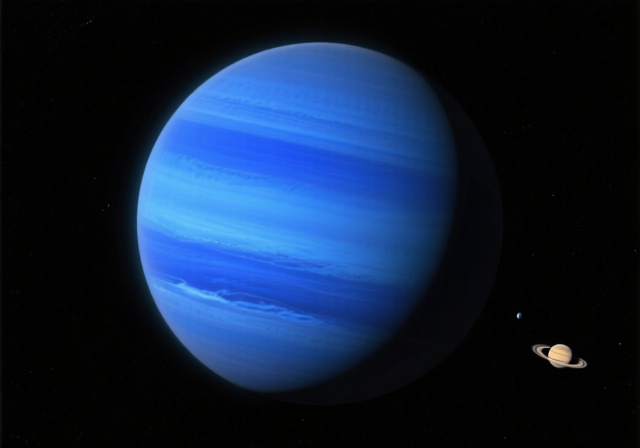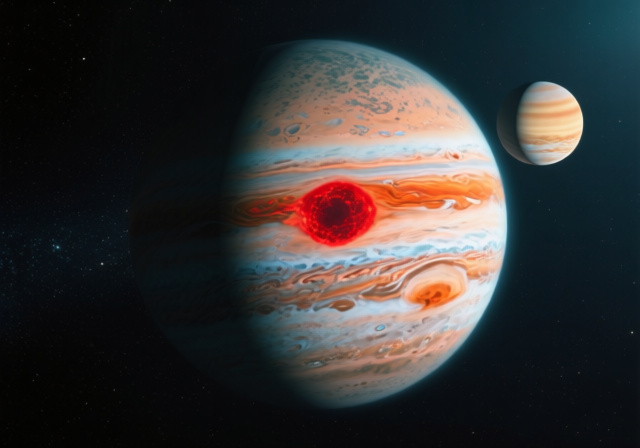

NASA’s Mars rovers represent humanity’s most successful robotic exploration program, transforming our understanding of the Red Planet through decades of groundbreaking discoveries. These robotic geologists have traveled across Martian terrain, analyzed rock samples, and searched for evidence of past water and potential signs of life. NASA has successfully operated five Mars rovers since 1997, each more advanced than the last, collectively spending over 25 years exploring Mars’ surface and sending back invaluable data about our planetary neighbor.
What makes Mars rovers so remarkable is their ability to act as our eyes, hands, and scientific instruments on another world, navigating challenging terrain and surviving extreme conditions while conducting sophisticated research millions of miles from Earth.
These missions have fundamentally changed our understanding of Mars from a distant, mysterious world to a complex planet with a rich geological history that once hosted conditions favorable for life. The rovers’ discoveries have laid essential groundwork for future human exploration, identifying resources, understanding environmental challenges, and pinpointing locations of greatest scientific interest.
Sojourner was the trailblazer that proved Mars surface exploration was possible, launching on December 4, 1996, and landing on July 4, 1997, as part of the Mars Pathfinder mission. This tiny rover, weighing just 23 pounds (10.6 kg) and measuring 2 feet (65 cm) long, operated for 83 sols (Martian days) – far exceeding its planned 7-day mission.
Despite its small size, Sojourner packed impressive capabilities including an alpha proton X-ray spectrometer for analyzing rock composition, a color camera with both wide-angle and narrow-field optics, and sophisticated mobility systems that could navigate around obstacles and traverse different terrains.
The rover explored the Ares Vallis landing site, analyzing 16 different rocks and soil samples, providing the first in-situ chemical analysis of Martian surface materials and confirming that Mars had a volcanic history with evidence of water-related processes.
Spirit launched on June 10, 2003, and landed on January 3, 2004, in Gusev Crater, a location chosen because it appeared to have once held a lake. This 384-pound (174 kg) rover was designed for a 90-sol mission but ultimately operated for 2,208 sols (over 6 years), far exceeding all expectations.
Spirit made groundbreaking discoveries including evidence of ancient hot springs and hydrothermal systems, carbonates in the Columbia Hills (suggesting Mars once had liquid water and a thicker atmosphere), and silica deposits similar to those found at hot springs on Earth where microbial life thrives.
The rover’s mission ended after it became trapped in soft soil in May 2009. Despite efforts to free it, Spirit continued operating as a stationary science platform until March 2010, when NASA lost contact during the harsh Martian winter.
Opportunity, Spirit’s twin, launched on July 7, 2003, and landed on January 24, 2004, on the opposite side of Mars in Meridiani Planum. What made Opportunity extraordinary was its incredible longevity – the rover operated for 5,111 sols (nearly 14 years) until June 2018.
This rover revolutionized our understanding of Mars by discovering the first definitive evidence of past liquid water on Mars (hematite “blueberries” indicating water-formed minerals), finding signs of ancient acidic water environments, and documenting changing environmental conditions over billions of years.
Opportunity’s final communication came during a massive global dust storm in June 2018. After months of attempts to reestablish contact, NASA declared the mission complete in February 2019, marking the end of one of space exploration’s most remarkable success stories.
Curiosity, launched November 26, 2011, and landed August 6, 2012, represents a quantum leap in Mars exploration capability. This car-sized rover weighs 1,982 pounds (899 kg) and is powered by a radioisotope thermoelectric generator (RTG), allowing it to operate day and night without relying on sunlight.
Operating in Gale Crater since 2012, Curiosity has made transformative discoveries including finding complex organic molecules in 3-billion-year-old mudstones, detecting seasonal methane variations (potentially related to biological processes), and discovering that Mars had all the necessary ingredients for life billions of years ago.
As of 2025, Curiosity continues to explore and climb Mount Sharp, analyzing rock layers that preserve Mars’ geological history and providing crucial data for planning future human missions to the Red Planet.
Perseverance, launched July 30, 2020, and landing February 18, 2021, is NASA’s most advanced Mars rover yet. Its mission in Jezero Crater focuses on astrobiology – specifically searching for signs of ancient microbial life and collecting rock and soil samples for potential return to Earth.
Key innovations include the PIXL instrument for precise chemical analysis, the MOXIE experiment that successfully produced oxygen from Mars’ carbon dioxide atmosphere, and the Sample Caching System designed to collect and seal core samples for future retrieval.
Perseverance also carries Ingenuity, a small helicopter that made history with the first powered flight on another planet in April 2021. This aerial demonstration opens new possibilities for future Mars exploration, combining surface and aerial capabilities.
NASA’s Mars rovers have fundamentally transformed our understanding of the Red Planet through decades of systematic exploration and analysis. The cumulative evidence from all five missions paints a picture of Mars as a once-habitable world with complex geological history and environments that could have supported life billions of years ago.
The most significant discovery across all missions is the definitive evidence that liquid water once flowed and pooled on Mars’ surface. From the hematite spheres found by Opportunity to the clay minerals discovered by Curiosity and the ancient river delta explored by Perseverance, each rover has contributed pieces to this puzzle, revealing that Mars had abundant water in its distant past, with lakes, rivers, and possibly even oceans.
Equally important is the discovery of organic molecules – the chemical building blocks of life – preserved in 3-billion-year-old rocks. While not proof of life itself, these findings suggest that the essential ingredients for life were present and potentially available for biological processes when Mars was wetter and warmer.
The rovers have also revealed Mars’ dynamic climate history, showing how the planet transitioned from a potentially habitable environment to the cold, arid world we see today. This understanding is crucial for assessing Mars’ potential for past life and planning future human exploration.
Mars rovers are essentially robotic laboratories designed to survive and operate in one of the most hostile environments imaginable. Each rover is equipped with sophisticated systems for power, mobility, communication, navigation, and scientific investigation.
Power systems vary between missions – earlier rovers like Spirit and Opportunity used solar panels that could generate about 140 watts of power on a clear day, while Curiosity and Perseverance use radioisotope thermoelectric generators (RTGs) that produce electricity from the heat of radioactive decay, providing consistent power day and night without being affected by dust storms.
Communication happens through NASA’s Deep Space Network, with rovers able to send data directly to Earth or relay it through orbiters like the Mars Reconnaissance Orbiter. The communication delay varies from 4 to 24 minutes each way, requiring rovers to operate autonomously to handle hazards and make decisions without real-time human input.
Navigation systems include multiple cameras (hazard avoidance, navigation, and panoramic), inertial measurement units to detect orientation and movement, and sophisticated software that allows rovers to identify safe paths, avoid obstacles, and even select their own targets for investigation.
While NASA’s rovers provide incredible close-up views of Mars, amateur astronomers can also observe the Red Planet from Earth with the right equipment and timing. Mars is best viewed during opposition, when Earth passes between Mars and the Sun, making the planet appear brightest and largest in our sky.
With a good telescope, especially one equipped with appropriate filters, observers can see Mars’ polar ice caps, dark surface features, and during favorable oppositions, even some of the larger geological features that rovers are exploring. The right optical equipment can reveal surprising detail, though nothing compares to the close-up images sent back by the rovers.
The best time to observe Mars is during opposition events, which occur approximately every 26 months. During these times, Mars appears as a bright reddish “star” in the night sky, and with telescopes 4 inches or larger, you can begin to see details that complement what we’re learning from the rover missions.
NASA has successfully sent five rovers to Mars: Sojourner (1997), Spirit and Opportunity (2004), Curiosity (2012), and Perseverance (2021). Each mission has built upon the successes of previous ones, with increasing capabilities and more sophisticated scientific instruments.
Yes, as of 2025, both Curiosity and Perseverance are still actively exploring Mars. Curiosity has been operating in Gale Crater since 2012, while Perseverance began its mission in Jezero Crater in 2021. Both rovers continue to send back data and images regularly.
Opportunity’s last communication was received on June 10, 2018, as a massive dust storm enveloped Mars. The rover’s final status indicated low battery and loss of communication. NASA attempted to contact Opportunity for months before declaring the mission complete in February 2019.
While Mars rovers have not found definitive proof of past or present life, they have made significant discoveries including organic molecules, evidence of ancient habitable environments, and conditions that could have supported microbial life billions of years ago. The search continues with Perseverance specifically designed to look for signs of ancient microbial life.
NASA’s Mars rover program represents one of humanity’s greatest scientific achievements, transforming our understanding of planetary science and our place in the universe. From Sojourner’s pioneering 83-day mission to Perseverance’s ongoing search for ancient life, each rover has contributed crucial knowledge that advances both scientific understanding and practical preparations for future human exploration.
The discoveries made by these robotic explorers have profound implications, suggesting that Mars once had conditions favorable for life and providing valuable data about where and how to search for evidence of past biological activity. As Curiosity and Perseverance continue their missions, and as NASA prepares for future sample return missions and eventual human exploration, the legacy of these remarkable machines will continue to inform and inspire our journey to the Red Planet.



